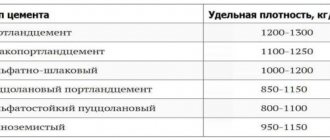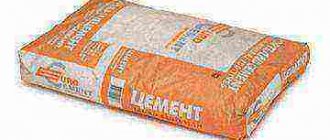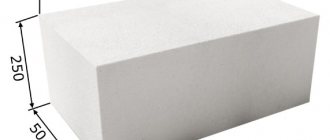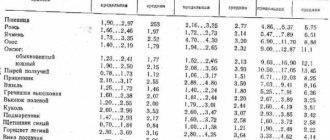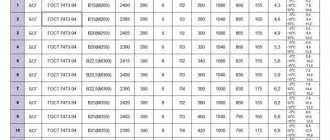Basics of correct calculation
When independently calculating the mass of a certain volume of tubers, the specific gravity of root crops is usually taken as the initial value, which can be found out by finding a table of physical properties. But with this approach, the result will be a significantly larger mass volume than the actual weight in kilograms, which is detected when checked on the scale.
The error of this approach is that the calculations were carried out based on the true density of the potato. At the same time, its peculiar shape, which is inherent in tubers in nature, was not taken into account at all. When calculating the mass of any volume of root crops, one should take into account not the true density (specific gravity), but the volumetric one.
Weight of different compounds
It should be remembered that the measurements taken may be inaccurate, because sometimes the density varies by a fraction of a percent. But the error rarely exceeds 5%, which is insignificant for domestic purposes. Laboratories that require precise calculations carry out their density measurements using special equipment. This allows you to obtain results with virtually no error.
Below is a table of the densities of individual types of paints. The limits of permissible values are indicated, which vary from one manufacturer to another:
Calculating the weight of paint can provide useful information.
To carry out the calculations, you just need to read the attached data or find them on the manufacturer’s website.
One of the favorite questions of both children and teachers at school, and addressed to them, is how much water weighs
. And although it would seem that weighing a liquid substance is not a problem, unlike, for example, a gaseous one, the answer to this question is not so clear-cut.
Bulk Density
Bulk density takes into account the amount of air that can enter certain containers along with potato tubers when they are filled. It is also calculated taking into account the fact that some materials are capable of compaction. Using volumetric density, it becomes possible to calculate the mass of a volume in loose, loosely poured, and compacted states. Although compacting potato tubers is certainly contraindicated. They are injured and, when compacted, are subject to rapid deterioration. In this case, these can only be theoretical calculations.
Volumes of second bread
Bulk density takes into account the amount of air that can enter certain containers along with potato tubers when they are filled. It is also calculated taking into account the fact that some materials are capable of compaction. Using volumetric density, it becomes possible to calculate the mass of a volume in loose, loosely poured, and compacted states.
To calculate the mass of a product placed in a container, the volume of the container must be multiplied by the density of the contents. To find out how many kg of potatoes are in a bucket, you need to multiply its volume by the density of the tubers. If you take the density of a potato tuber and multiply it by the displacement of the container, the resulting number will not coincide with the readings of the scales. The subtlety lies in what density to use for calculations.
The potato tuber has a longitudinal oval and transverse round shape in projection. But not always. The geometry of the tuber is distinguished by bizarre contour changes. There is free space between the potatoes placed in the container; the shape does not allow the container to be filled one hundred percent. Therefore, to calculate mass, the concept of bulk density is used. Potatoes have a bulk, or volumetric, density in the range from 0.65 to 0.75 g/cm3.
Correct Method
The surest way to determine the volumetric mass for potatoes is through bulk density. What volume is usually chosen to calculate the mass of tubers in a mound? There are several possible options here:
- they want to know the mass of the volume relative to 1 cubic meter;
- or are interested in household containers: bags, buckets.
Most often people ask the question: how many kilograms of potatoes are in a bucket? More precisely, they are interested in both the volumetric weight of the potato and its bulk density.
What types of buckets are there?
The capacity of buckets for potato tubers in bulk is always regulated in liters, as is logical to expect from the manufacturer, but not in kilograms that the bucket can hold. Household buckets come in different standard sizes: three, five, ten, twelve liters. There are buckets of 9 and 15 liters.
When answering the question, how many kilograms of potatoes are in a 10-liter bucket, you should take into account the material from which it is made. When using an enamel bucket, the weight of the empty container is added to the weight of the potatoes - about 2 kg. And the weight of potatoes poured into a galvanized bucket with a capacity of 10 liters increases by approximately 1 kg.
Naturally, the displacement of buckets cannot be used for weighing potato tubers in an embankment. After all, the displacement of a container has no connection with the volumetric weight of its contents, and even more so with the actual weight of the potato tubers placed in the bucket. Buckets are universal containers. You can place in bulk completely different substances, products, cereals, grains, fruits, vegetables, root vegetables, including potato tubers.
How many kilograms of potatoes are in a 10 liter bucket?
The easiest way to determine this is experimentally by pouring root vegetables into a container. Then you should weigh the full bucket on a scale and subtract the weight of the bucket itself. But the resulting indicator cannot be considered a constant value and the answer to the question: how to find out how many kilograms of potatoes are in a bucket? After all, the weight of tubers in the same container will fluctuate, depending on their size and shape. This value is also affected by the fullness of the bucket: if potato tubers with a “slide” are generously poured into it, then the total weight will increase.
Question: how many kilograms of potatoes are in a 10-liter bucket? Answer: the volumetric weight or bulk density of potatoes in a standard bucket can be from 6.5 to 7.5 kg. This is true for a bucket filled without a slide with medium-sized tubers.
A container filled with large root vegetables will be lighter in weight than one of the same volume but containing small “peas”. After all, the air-filled spaces between large potatoes will be large, but they have no weight. When filling a bucket with tubers of a regular round shape, there will be less free space than in a container with oblong potatoes.
Therefore, to the question of how many kilograms of potatoes are in a 10-liter, 5- or 15-liter bucket, there is no definite answer. With approximate accuracy, you can only measure or calculate the weight for root crops of approximately the same size.
A table of the approximate weight of one potato for tubers of different sizes can help in the calculations
When buying potatoes “from hand,” you can often find sellers who sell potatoes not by weight, but in buckets, so if you decide to buy a bucket of potatoes and want to know in advance whether it is profitable to buy this way and what the weight of the purchased potatoes will be, you need to know how much does a bucket of potatoes weigh, taking into account the volume of the bucket (5, 10, 12 liters).
Regarding the weight of potatoes
Let's move on to calculating the weight of the crop in one unit of container. Let's consider how many kg of potatoes are in a 10 liter bucket. To avoid mistakes, turn the container upside down. The volume is marked on the bottom surface. The inscription “10 l” means that the capacity is ten liters. If there is no marking on the surface, then the volume can be determined using water.
The weight variation when filling ten liters is 6.5-7.5 kilograms. How many kg of potatoes are in a 12-liter bucket? You need to divide the weight of a ten-liter bucket by 10 and multiply by 12. So, for potatoes, the calculated mass in a 12-liter vessel is in the range of 7.8-9.0 kilograms.
Why do you need to find out how much a bucket of potatoes weighs? No matter how the division of labor is structured in society, women often have to carry food from the market or store. According to safety regulations, ladies should not lift weights exceeding 10 kilograms. Now readers know that a 12-liter bucket holds a maximum of 9 kilograms of product.
For what purpose does the table contain information about the number of tubers in the container? Knowing how many people will have to cook for and what the menu is, the housewife will calculate what is more profitable: buying a bucket of small or large potatoes.
The gardener reader already knows, but it’s useful for others to take note: starch is obtained from small potatoes. The tubers need to be washed in three waters, minced in a meat grinder, and the resulting slurry poured with clean water five times until the starch settles to the bottom of the bowl and the water on top is clear. The last liquid is drained and the powder is dried.
How many kilograms of potatoes are in a 5, 10, 12 liter bucket?
In the examples below, the potatoes were placed in a bucket with a small heap (this is how they are often sold), but it is important not to forget that the larger the potatoes, the less their mass in the bucket will be (small potatoes fit more compactly in the bucket and take up more volume):
- A 5 liter bucket can hold 3-3.5 kg of potatoes, depending on the size of the tubers.
- A 10 liter bucket holds 6.5-7.5 kg of medium-sized potatoes.
- A 12 liter bucket (a large galvanized bucket) holds an average of 9-10 kg of potatoes.
Types of containers
Buckets are produced in volumes of 5, 7, 9, 10 and 12 liters. What exactly the gardener will use when digging potatoes depends on the physical form of the picker and the volume of tubers. The household classification of starchy fruit is given in the table.
We invite you to familiarize yourself with Describe the flowers of pea plants using formulas
| Name | Comparative characteristics | Weight 1 pc. in grams | Volume 1 pc. in cm3 | Pieces per 10 l |
| Very large | With ostrich egg | 450-500 | 643 | 15-16 |
| Big | With a tennis ball | 210-250 | 330 | 30-31 |
| Average | The one that they used to call “from the market” | 160-180 | 260 | 38-39 |
| Small | Like in a store, a little larger than a chicken egg | 50-80 | 114 | 86-88 |
| Very small | Peas. Smaller than table tennis balls | 20-30 | 43 | 233 |
How much does a bucket of potatoes weigh?
A 10-liter bucket weighs 6.5 - 7.5 kg, and a 12-liter bucket weighs up to 10.3 kg.
The weight of a bucket of potatoes, first of all, depends on the volume of the container itself. For example, 6.5 - 7.5 kg of potatoes can be poured into a 10 liter bucket. The value of this indicator is also affected by the fullness of the bucket - if the seller generously poured a heaping amount of potato tubers, then the total weight will increase.
In addition, the material from which the bucket is made is taken into account. So, in an enamel bucket, the weight of the empty container is added to the weight of the potatoes - about 2 kg. And the weight of potatoes poured into a galvanized bucket with a capacity of 10 liters will increase by about 1 kg.
About 10.3 kg of medium-sized tubers can be poured into a 12-liter bucket, excluding the weight of the container.
How much does a bucket of potatoes weigh? Another deciding factor is the size of the tubers in the bucket. More small potatoes will fit into a bucket than large ones, and the filling of the space will be more dense. But large, elongated potatoes leave a lot of free space in the bucket.
How to harvest
Potatoes in the field are dug, collected and poured into jute bags for transportation. The capacity of the bags varies; it can be a container of 35 and 55 kg. Therefore, you need to imagine how much a bucket of potatoes weighs. Filling the bag is no problem. Lifting and loading into transport is not a task for everyone. Now that the weight of the running sizes of buckets with tubers has been calculated, you can safely fill the bags.
Twelve-liter vessels are poured three into bags with a capacity of 40 liters and four into containers with a volume of 55 liters. When filling the bag, you should leave room for tying it. At the same time, we remember that three vessels filled to the top weigh 23.5-27 kg, and four have a mass of 31-36 kg. A well-fed lamb weighs 38 kg. This is a suitable subject for comparison. Only the sack, unlike the ram, does not kick.
We invite you to familiarize yourself with Product Description Potatoes
How much does a bucket of mushrooms weigh?
A bucket of mushrooms weighs from 2.5 to 10 kg. depending on the type of mushroom.
Mushrooms can differ not only in taste and general appearance, but also in density. Different types of mushrooms have different densities, which determines their weight. For example, let’s take a ten-liter container as a unit of measure. A bucket of chanterelles weighs 2.5 kg, honey mushrooms - 3 - 4 kg, saffron milk caps - 4 kg, porcini mushrooms - 4 - 6 kg, butter mushrooms - 10 kg. So, of these species, chanterelles are the lightest, and boletus mushrooms are the heaviest mushrooms by weight.
How much does a bucket of sand weigh?
A bucket is a popular measure for many products and materials. If we talk about sand, its weight directly depends on the type and quality. For example, a 10 liter bucket of sand for construction work will weigh about 16 kg, and a 12 liter bucket will weigh about 18 - 20 kg. For dry river sand, these figures will be 15.2 kg and 18.3 kg, respectively. But the weight of a bucket (10 liters) of wet sand is already a little heavier - approximately 18.1 kg.
A 10 liter bucket of sand weighs about 16 kg, and a 12 liter bucket weighs 18 - 20 kg.
Sand mixed with dust, poured into a ten-liter bucket, will weigh about 20.7 kg, which is about four kilograms heavier than construction sand. The same difference in weight will be observed if you weigh and compare 12-liter buckets of sand of these types.
